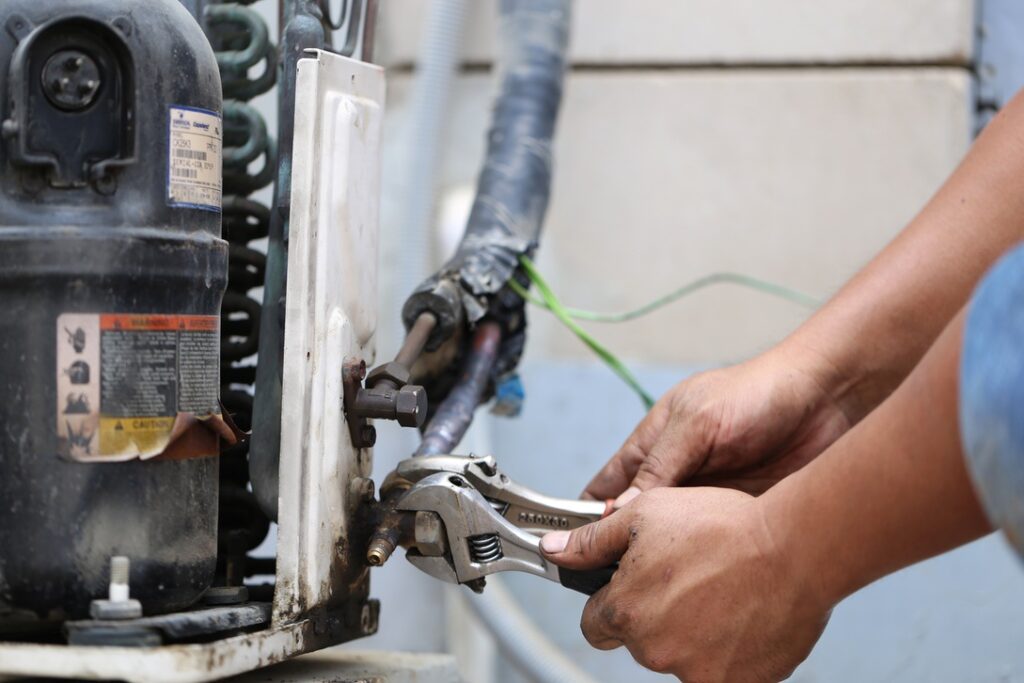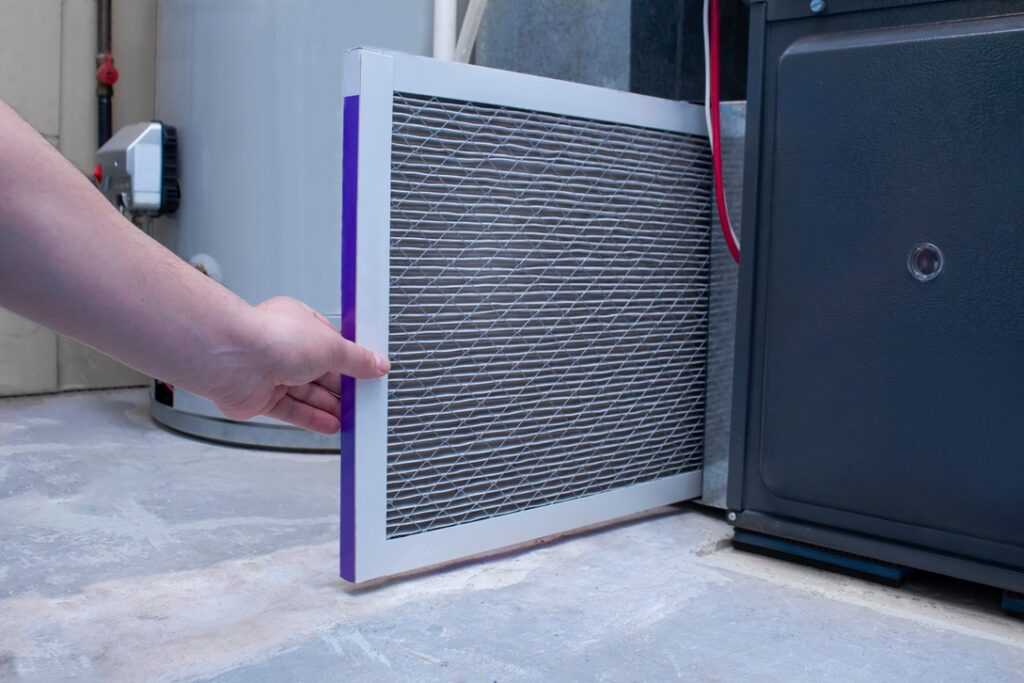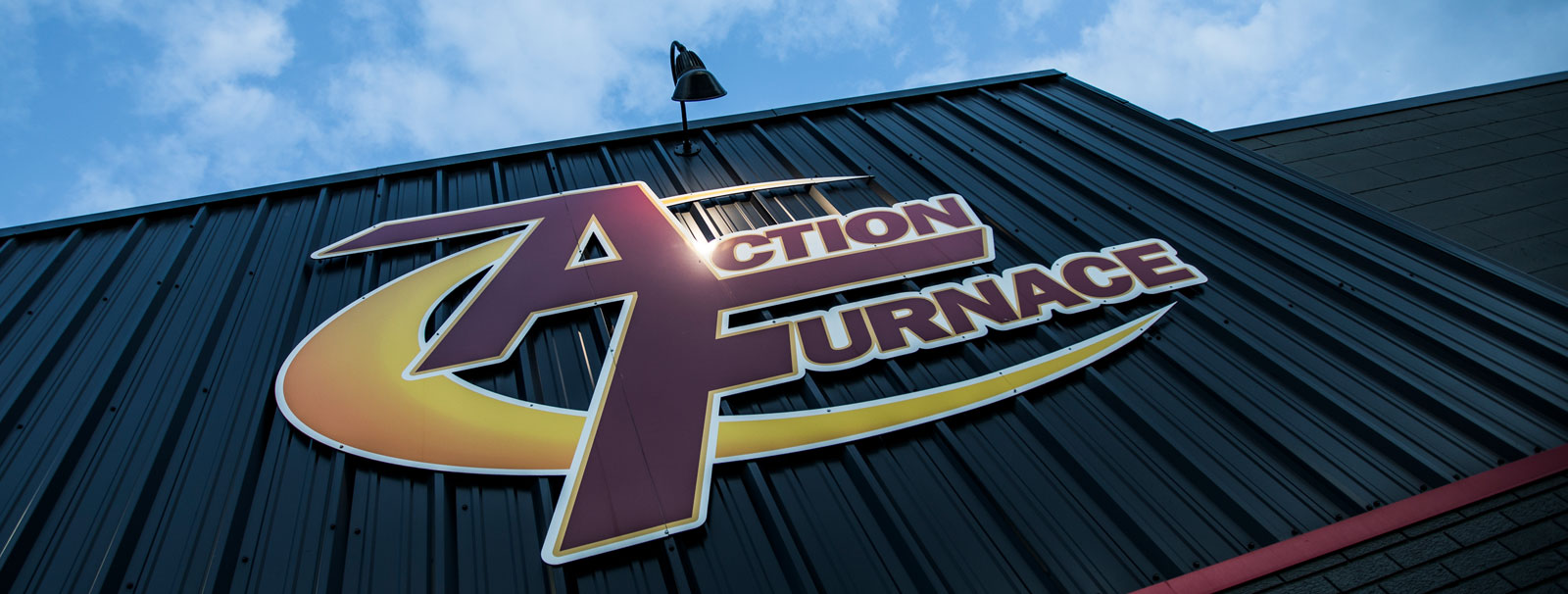High-efficiency furnaces can have efficiency ratings of up to 98.5%, compared to just 70% or even less for models older than a decade. Let Action Furnace teach you about the technology these new models use to heat your home with less energy, and how they could save you money every month.
...

Your furnace spends all winter working to keep you warm during the harsh winter months—but if you’ve been relying on it for years, there’s a good chance you’re overpaying to heat your home. Over the last 20-30 years, furnaces have undergone significant transformations, making them more efficient than ever before and significantly lowering their operating costs.
Our team at Action Furnace has decades of combined experience installing furnaces in Alberta, so we know all about how heating equipment has evolved over the years. In this article, we’ll cover the history of furnace development and highlight key technological breakthroughs so that you can weigh the pros and cons of upgrading and make the best choice for your home.

Furnaces of the Early ’90s
Many modern homes still use furnaces from decades ago—going all the way back to the 1990s! While many of these models were cutting-edge at the time they were manufactured and may still function today, you’ll almost certainly pay more to run and maintain them than you would with a newer model.
Key Features
- Natural Draft Systems: In the early ’90s, furnaces primarily used natural draft systems, which were less efficient than the draft systems in later models and relied on a constantly burning pilot light.
- Single-Speed Blowers: These furnaces had single-speed blower motors, offering less flexibility in heating than newer models—the furnace was either on full blast or off.
Considerations for Homeowners
- Maintenance Costs: While they may still function, early ’90s furnaces are usually more prone to breakdowns due to wear and tear on components over decades of use. If you have one, you almost certainly spend more on service calls than you would with a new model.
- Emergency Breakdowns: Wear and tear can cause total system failures as well as minor inconveniences. Old furnaces have a higher risk of failing, which can make your home unlivable in the middle of a cold Alberta winter.
- Operating Expenses: 90s furnaces only had AFUE ratings of 56-70%, and their efficiency declined further over time as they were used. This results in significantly higher heating bills each month than you would get with newer models.
See Also:

Furnaces of the Late ’90s to Early 2000s
Near the dawn of the new millennium, home furnaces saw the introduction of more sophisticated mechanical and electrical systems. These features created significant gains in energy efficiency, and also improved the ability of contemporary furnaces to heat homes evenly, resulting in more comfort for less money.
Key Developments
- Electronic Ignition: Replacing the constantly burning pilot light with an electronic igniter prevented fuel from being used constantly and made furnaces significantly more efficient.
- Multi-Speed Blowers: Unlike their predecessors, these furnaces had the ability to run at different speeds, offering more consistent heating.
Benefits for Homeowners
- Higher Efficiency Ratings: Furnaces from this era tended to have AFUE ratings of 80-90%, depending on the model—however, furnaces made during this period will have significantly lower efficiency if they are still being used today, since all furnaces lose some efficiency over time.
- Reduced Energy Bills: Thanks to the electronic ignition and multi-speed blowers, these furnaces used less power to heat homes, reducing monthly energy bills.
- Enhanced Comfort: Multi-speed blowers provided better airflow and temperature control, enhancing overall comfort.

Furnaces From the 2010s Onward
Modern, high-efficiency furnaces offer significantly better energy efficiency than older models—often enough to offset the costs of upgrading after a few years of use and provide net savings to homeowners!
Cutting-Edge Technology
- Modulating Gas Valves: These allow the furnace to adjust the amount of fuel being burned, resulting in precise temperature control.
- Smart Thermostats: Integration with smart home systems enables homeowners to control their furnace remotely.
- AFUE Ratings Above 90%: The Annual Fuel Utilization Efficiency (AFUE) rating soared above 90%, making these furnaces incredibly efficient.
Benefits for Homeowners
- Maximum Efficiency: Since modern furnaces are able to produce sufficient heat with much smaller amounts of fuel than older models, homeowners can enjoy even lower energy bills.
- Remote Control: Smart thermostats offer the convenience of adjusting your home’s temperature from anywhere, and can be programmed to automatically adjust the furnace to your comfort preferences, further reducing unnecessary fuel consumption.
- Eco-Friendly: Higher efficiency means less energy waste and a smaller carbon footprint.
See Also:
Comparison Chart: Old vs. New Furnaces
| Old Furnaces (Early ’90s) | New Furnaces (2010s) | Modern High-Efficiency Furnaces (2020s) | |
| Efficiency (AFUE Rating) | Low (Around 65%) | High (80-90%) | Highest (90-98%) |
| Natural Draft System | Yes | No | No |
| Electronic Ignition | No | Yes | Yes |
| Single-Speed Blowers | Yes | No | No |
| Multi-Speed Blowers | No | Yes | Yes |
| Modulating Gas Valves | No | No | Yes |
| Smart Thermostat Compatible | No | Some | Yes |
| Fuel Utilization | Inefficient | Efficient | Highly Efficient |
| Cost-Efficiency | Lower Initial Cost | Moderate Initial Cost | Higher Initial Cost, Lower Operating Cost |
| Environmental Impact | Higher | Moderate | Lowest |
| User Control | Limited | Moderate | Extensive |
| Comfort | Moderate | High | Highest |

Frequently Asked Questions about High-Efficiency Furnaces
How much does it cost to install a high-efficiency furnace?
The installation cost for a high-efficiency furnace usually falls between $3,000 to $6,000, depending on factors such as brand, labor charges, and additional features. When you contact us about installing a new high-efficiency furnace in your home, we’ll provide you with a detailed estimate for the project so that you can make an informed decision.
How long does it take to install a high-efficiency furnace?
A typical installation can take anywhere from 4 to 8 hours, although it could take longer if ductwork modifications are needed. When you’re scheduling your installation with us, we’ll ask you a few questions about the layout of your home and ductwork so that we can provide a reasonable time-frame for the work.
What is the lifespan of a high-efficiency furnace?
A well-maintained high-efficiency furnace can last between 15 to 20 years while retaining much of its original energy efficiency. This is significantly longer than older, less efficient models.
What maintenance is required for a high-efficiency furnace?
There’s some furnace maintenance you can do by yourself, but annual inspections and tune-ups by our certified HVAC technicians are strongly recommended. In addition, monthly filter changes and vent inspections can improve your furnace’s lifespan and efficiency.
What is AFUE?
AFUE stands for Annual Fuel Utilization Efficiency. Expressed as a percentage, this rating indicates how well a furnace converts fuel into heat over the course of a year. For example, an AFUE rating of 90% means that 90% of the fuel consumed by the furnace is converted into usable heat, while the remaining 10% is lost in the process, often through venting or as waste heat.
A higher AFUE rating generally means better efficiency, lower energy bills, and a smaller carbon footprint. It’s an important factor to consider when shopping for a new furnace, as it can significantly impact both your budget and your home’s environmental impact. Modern high-efficiency furnaces often have AFUE ratings above 90%, making them significantly more efficient than older models.
Is a high-efficiency furnace quieter than older models?
Yes, the advanced technology in high-efficiency furnaces makes them quieter during operation compared to older models that often made clunking and banging noises.
Can a high-efficiency furnace be integrated into my existing HVAC system?
Most likely, yes. However, you may need some modifications to your ductwork or ventilation systems to ensure optimal efficiency. When you contact Action Furnace, our HVAC professionals will ask you a few quick questions and let you know what steps might be involved in adapting your current ductwork to work with a new high-efficiency furnace.



